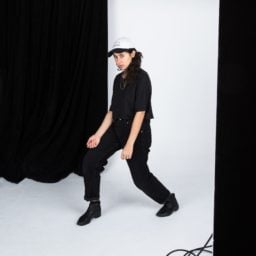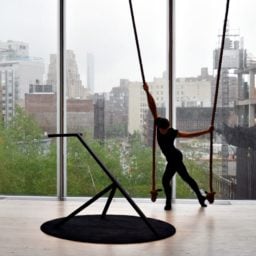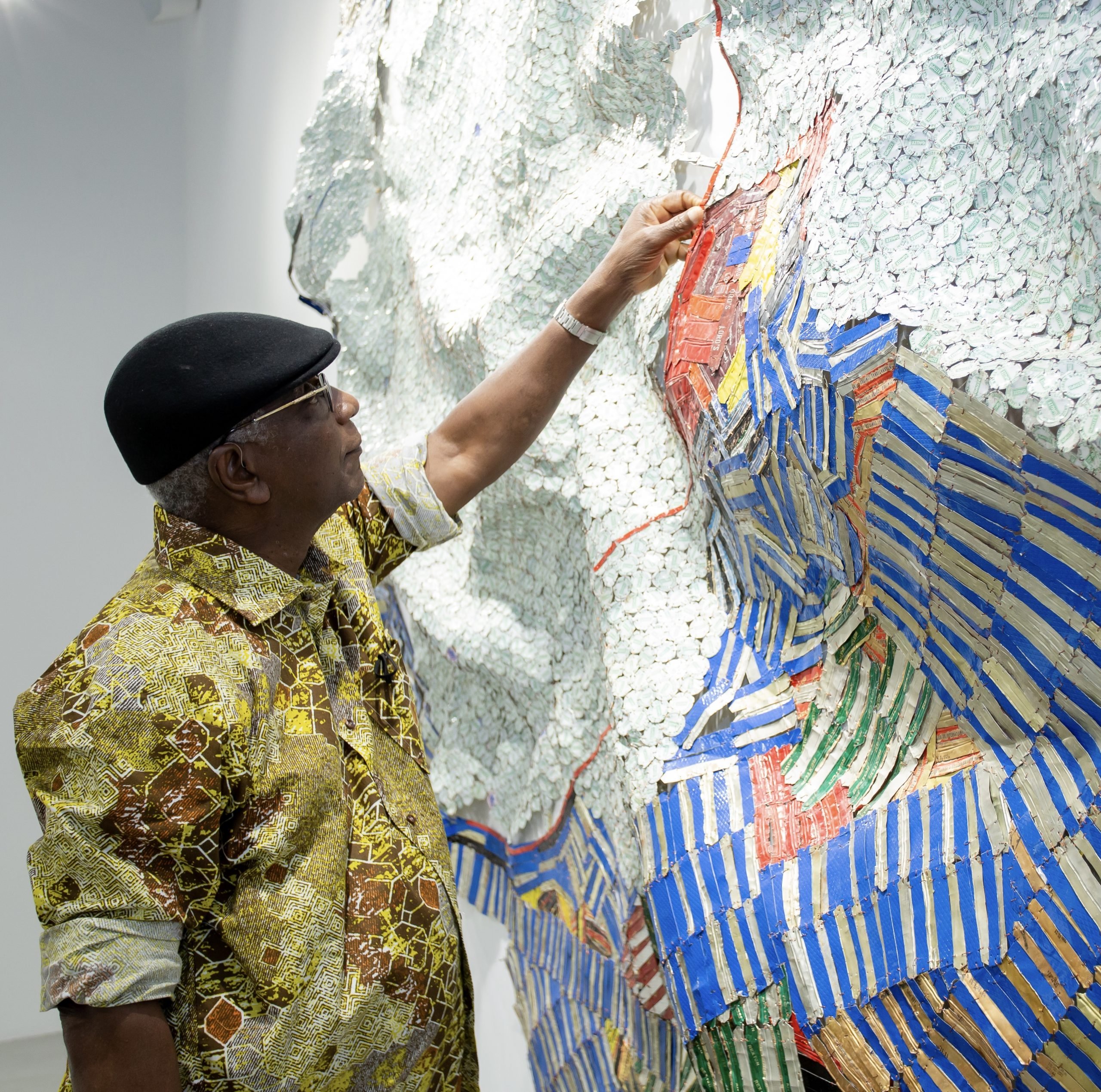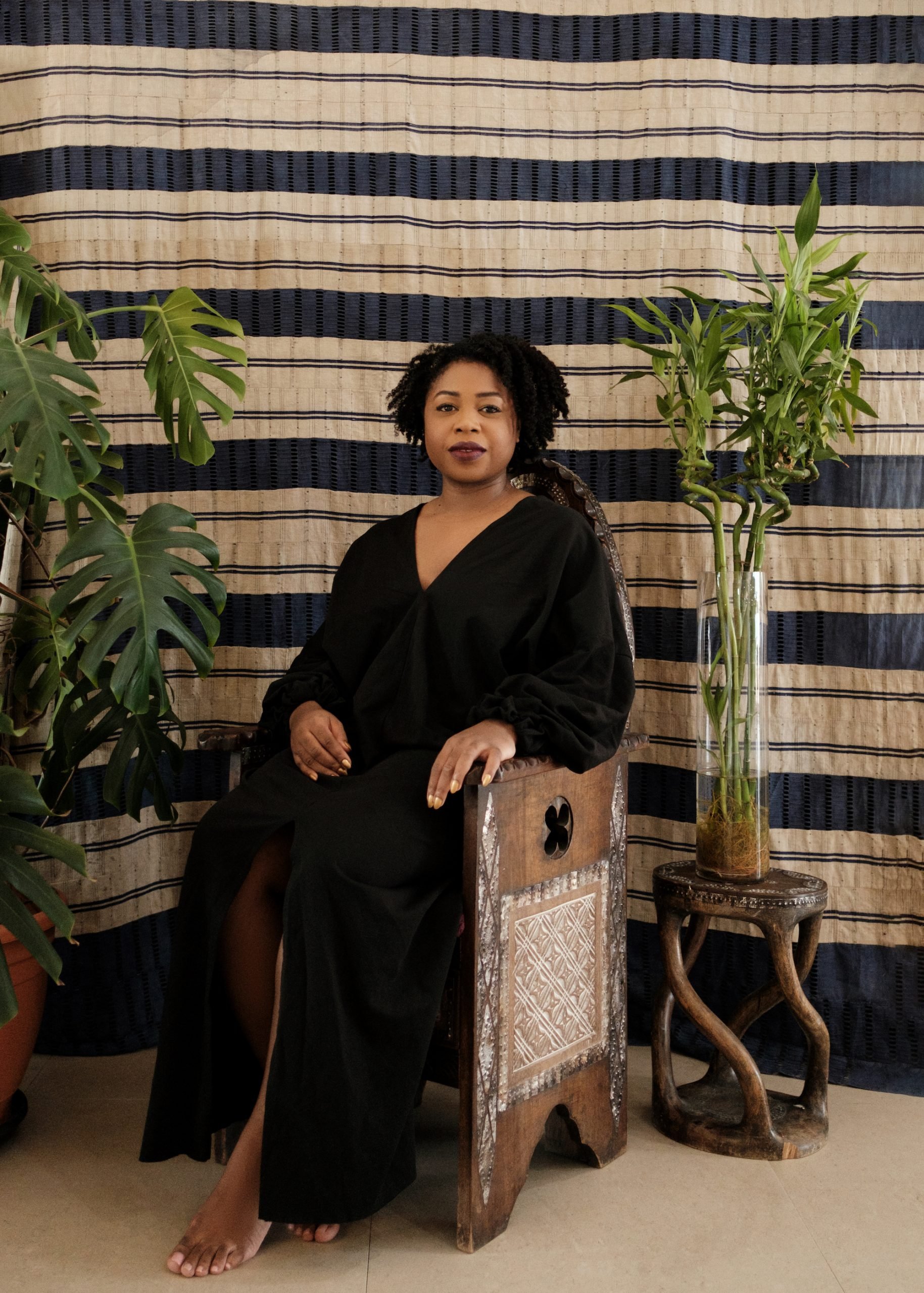In less than a week, Christine Sun Kim will perform for an audience of nearly 100 million people watching the Super Bowl. The artist, known for her transgressive distillations of sound and language, will deliver her American Sign Language rendition of the National Anthem as the pop musician Demi Lovato sings from nearby on stage.
At age 39, the Berlin-based American artist was stunned when she received the offer to represent the non-hearing community in what has become an annual partnership between the National Football League (NFL) and the National Association of the Deaf (NAD). Few artists, including herself, could ever imagine themselves performing at the center of a football stadium—let alone during one of America’s most-watched sporting events.
The honor comes at a moment when the art world is watching closely to see what Kim does next. Her text paintings that chart the degrees of “Deaf Rage” she has experienced while navigating airports, museums, and other institutions were prominently featured in the 2019 Whitney Biennial. And over the summer, Kim joined seven other artists in promising to withdraw their work from the exhibition if Warren Kanders was not removed from the museum’s board of trustees. (The vice chairman later resigned.) Early next month, the artist will debut new work in a solo exhibition at the MIT List Visual Arts Center.
Before heading down to Miami for Super Bowl Sunday, we had a chance to interview the artist about how she was chosen for the opportunity, why she accepted, and what this kind of exposure means for the Deaf community.
How does an artist end up signing the National Anthem at the Super Bowl? Was there a selection process or were you chosen by the National Association of the Deaf (NAD)?
Every year before the Super Bowl, the NAD looks for a Deaf person who represents the signing community. They ask potential candidates to submit audition videos of their signing style to assess their expression level and to ensure that their delivery is well.
When Alexis Kashar, a Deaf civil rights attorney, and Howard A. Rosenblum, CEO of the NAD, asked me to send them a video, I took a stab at translating it [the National Anthem] into American Sign Language, which has an entirely different syntax and grammar compared to English. I guess I was expressive enough for the gig!
What was your reaction to the offer? What does something like this mean for the Deaf community?
I was a bit stunned that they even considered me. Honestly, I’m not exactly big on watching signed songs or interpreted music. The Deaf community has this amazing group of poets who can really sign with so much rhythm; however, the ones who sign songs written by non-deaf people get so much more attention because that’s the kind of content the hearing world values.
With the NFL’s massive platform, we can actually bring sign language to millions of homes. Representation matters a great deal to me, and I hope that seeing a Deaf person signing the anthem will bring attention to various issues that plague our community: language-deprived deaf babies, police brutality towards disabled people, a lack of mental health services, and many others.
The biggest reason why I have decided to perform, however, is because I’m so damn patriotic as a Deaf person. Compared to other countries, America has it good—although not perfect—when it comes to disability laws. (Fun fact: The NAD is the oldest civil rights organization in America, founded in 1880.) When I was younger, I was able to get an education with interpreters, watch TV shows and movies with captions, and make phone calls with online interpreters for the entirety of my life. I want to represent that very aspect of privilege while signing the anthem.
It’s certainly an honor to represent the Deaf community at one of America’s most-watched events. Did you ever imagine that you’d be at the center of a football stadium? (Are you even a fan of football?)
Never in my life would I have imagined doing this! I’m already having nightmares about forgetting the lyrics while performing. Now that I think about it, I don’t think I’ve ever been to an NFL game, but I grew up watching my Korean American relatives rooting for their teams on TV, especially the 49ers.
Other than watching the commercials, football was never a big part of my life. But the Super Bowl is an opportunity to have a platform for my community. Since the game is hosted by a different broadcast each year, the airtime isn’t guaranteed; this year, it’s entirely up to FOX to decide how much they’ll show me on their channel—hopefully at least for a few seconds.
The model and actor Nyle DiMarco recently performed the National Anthem at the NBA Finals. I saw that you’ve been talking over Twitter. Did you know each other before you got the Super Bowl offer? Has he given you any good advice for the big day?
We met through a mutual friend a couple of years ago and we’ve been hitting it off ever since. He told me to just have fun and sign. I think that’s good advice.
What does one wear to perform at the Super Bowl?
NAD and the NFL actually have some basic criteria. Wear shoes that would be good for walking on turf. My shirt must be flexible enough for me to sign big; I also can’t wear any wild patterns that would make my signing hands less legible for deaf viewers. No sheer material just in case it rains—those kinds of things. I’m particularly excited to announce that I will be wearing an outfit designed by Opening Ceremony, which was founded by two Asian Americans.
There’s not usually a lot of overlap between art and sports. Damien Hirst has a fascination with pool; Jeff Koons sometimes uses basketballs in his work; Andy Warhol took polaroids of sports stars; and Hank Willis Thomas once said that sports can be seen as a proxy for war. What’s your relationship with sports, and do you see any connections to your art practice? Should we expect some football-inspired artworks on the horizon?
Haha, maybe. I think as a typical American, I played my fair share of sports when I was a kid. I did many years of gymnastics and swimming, but was never that good. I remember during the 1990s, there was a trend amongst local newspapers to feature deaf high school athletes. Basically, “Wow, deaf athletes are normal like us, they do sports!” It was pre-social media inspiration porn.
Also, I’ve always been a closeted cheerleader. I once auditioned for the cheer squad in high school and didn’t make the cut. It’s funny, now every time I practice signing the anthem, it makes me think about how my own big movements are so similar to cheerleading. I’ve been thinking about translating my performance into a video work. My interest in cheerleading also got renewed because of the Netflix docuseries Cheer. Everyone needs a Monica in their lives!
Your art can be very political. When you were asked to sign the National Anthem, was there any hesitancy on your part? If so, why?
My art has always been political—mainly because my identity and language are both politically charged to begin with. Being the first Deaf Asian American to sign the anthem is going to be surreal! It makes me think of watching Margaret Cho’s historic “All-American Girl” television series as a teen. That just completely blew my mind.
There are always political considerations in each performance, and I did have initial concerns with the Super Bowl opportunity. But ultimately, the idea of bringing ASL visibility to millions of people won the argument. I will also release a personal statement in the near future explaining why I chose to perform.
Follow Artnet News on Facebook:
Want to stay ahead of the art world? Subscribe to our newsletter to get the breaking news, eye-opening interviews, and incisive critical takes that drive the conversation forward.








